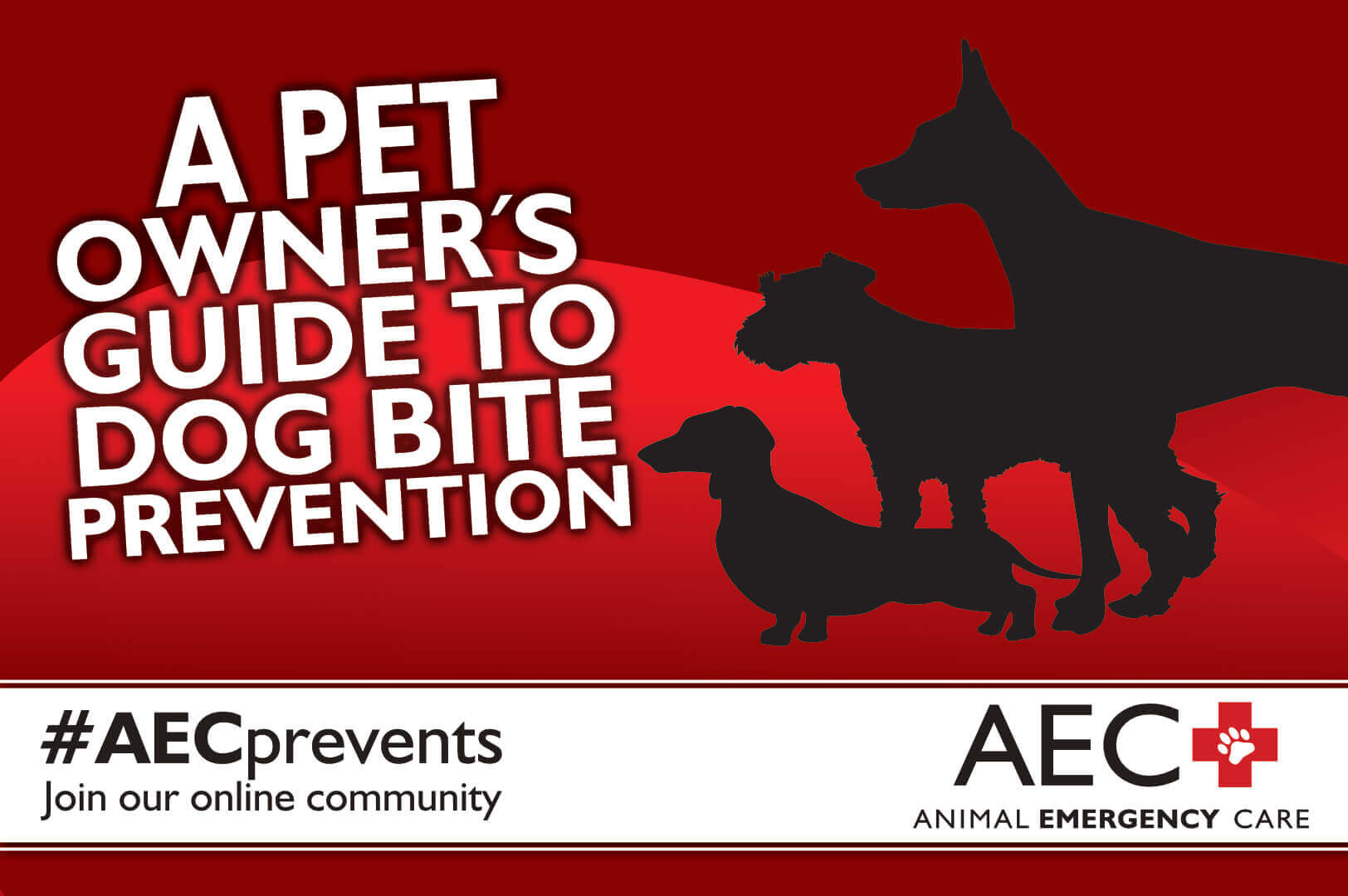More than 38% of U.S. homes have at least one family dog. Caring for a canine friend is a rewarding responsibility that brings wet kisses, walks in the park, and cozy cuddles. However, dogs bite more than 4.5 million people each year and more than 800,000 people require medical care according to the Centers for Disease Control (CDC). Being a responsible pet owner is critical to ensure your family pet does not become a dog-bite statistic. Our Animal Emergency Care team has compiled a dog-bite prevention guide to ensure pet owners understand that preventive dog-bite measures are available.
Why do dogs bite?
Many dog breeds have been blamed unjustifiably and earned reputations for being aggressive. The truth of the matter is any dog breed, age, sex, size, or personality can bite people or animals. Even dogs who are generally calm or friendly have the potential to bite. Common reasons a dog may bite include:
- Being startled by an unexpected sound or a person suddenly approaching
- Stress or anxiety
- Fear of a person, object, or situation such as being touched by a stranger
- Fearing their territory is being invaded or threatened since they are territorial
- Trying to protect themselves or their owner
- Sickness, injury, or pain
- Play biting
Dog socialization for dog-bite prevention
Many dog-bite incidents can be avoided with proper training and socialization for your dog. Proper socialization prepares your dog to enjoy interactions and become comfortable in any situation. Early training and socialization is critical because dogs are most receptive to learning between the ages of 3 and 14 weeks. However, learning is a lifelong process and your furry pal could grow fearful and anxious of new experiences or could develop aggression toward people or other animals without proper positive socialization. Recommendations for proper socialization and training include:
- Enrolling your puppy or adult dog in reward-based behavior training class
- Exposing them to a variety of sights, sounds, and smells in high-traffic areas after they are vaccinated and on parasite control
- Providing ample praise and treats after each positive interaction with a new sound, animal, or person
- Always keeping your dog on a fixed-length leash in public
- Providing your dog with a consistent daily routine of training, socialization, and play
- Teaching your dog to sit and come on command should they accidentally get loose
- Providing your dog with lifelong diverse experiences to encourage them to enjoy and not fear new places, people, or animals
Responsible pet ownership for dog-bite prevention
Responsible pet ownership will decrease the chances of your dog biting or being adversely affected by another biting dog. Regular preventive care visits will ensure your dog is current with their vaccinations and protect them from contracting or spreading dangerous infectious diseases. Dogs who bite another human or animal require extensive quarantining and are at risk for euthanasia, especially if they have not been vaccinated against rabies. Dogs who are bitten require immediate veterinary care so consider purchasing pet insurance like Trupanion to ensure funds are available for emergency medical care. Other responsible pet ownership steps include:
- Spaying or neutering your dog to decrease aggressive tendencies and their desire to roam
- Scheduling a veterinary wellness exam to rule out medical causes for your dog’s aggressive behavior
- Scheduling a veterinary behavior consultation exam if your dog shows aggressive tendencies and medical problems have been ruled out
- Providing your dog with ample opportunities for daily exercise and play to prevent aggression because of boredom or pent-up energy
Understanding dog body language
Dogs have unique communication methods. Understanding that a dog staring longingly at the cookie jar wants another treat is easy. However, subtle changes in a dog’s body language can signal that they are anxious or uncomfortable and have the potential to bite. Never make direct eye contact or approach a dog who is barking, growling, or aggressively advancing toward you or your pet. Never scold or yell at a dog who is growling or behaving aggressively since this can make them feel more threatened. Body posture warning signs include:
- Ears up, forward, or flattened
- Raised hair on their back or tail
- Straight or raised tail with possible tail wagging
- Stiff and straight-legged stance
- Staring aggressively and walking toward a perceived threat
- Baring teeth or repeatedly licking lips
- Crouching to appear small because of fear
- Tail between their legs
Dog-bite prevention methods
Dog bites are often unexpected and can be stressful for the people and dogs involved. Avoiding risky situations will decrease the chances of a bite. Dog lovers may find it difficult to hold back their desire to cuddle a new friend but you should avoid petting or aggressively approaching an unfamiliar dog. Never approach a dog when:
- An unfamiliar dog is without their owner
- The owner of an unfamiliar dog does not give you permission to approach them
- The dog is on the other side of a fence or in a crate or kennel
- An unfamiliar dog is injured
- A mother dog is resting with their puppies
- A dog is hiding or seeking time alone
Ensure you safely restrain your dog and remove them from the situation if they bite a person or another animal. Check on the person or pet affected and call for emergency care if needed. Provide your contact information and your pet’s proof of rabies vaccination. Pets who are bitten by a dog could require emergency veterinary care because dog bites are painful, are often more serious than they appear on the surface, and can lead to dangerous infections without treatment. Immediately call your family veterinarian or bring your dog to Animal Emergency Care if another dog bites them. #AECprevents


